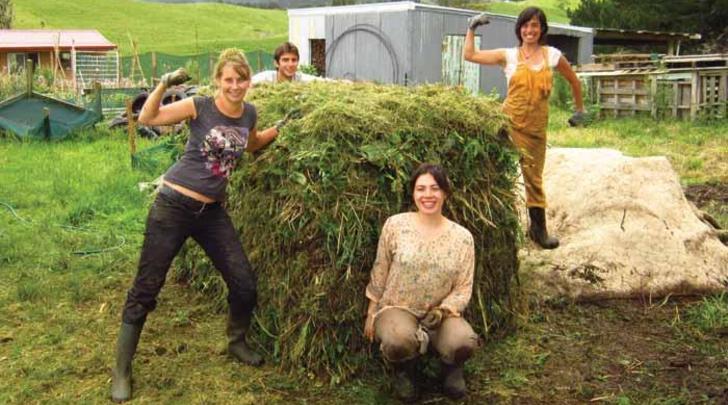Travel and tourism
What is wwoofing?
Greg Roughan - Green Ideas editor

Wwoofing – the travelling style with the catchy name – is a cheap way for tourists to see New Zealand, or Kiwis to discover the world, while living in a wholesome organic environment.
An acronym of Willing Workers On Organic Farms, wwoofing sees volunteers receive food and accommodation on an organic property in exchange for half a day’s work.
While here the system is particularly popular with young visitors from Europe who are interested in sustainability, it’s an international programme and anyone can be a wwoofer. Lots of New Zealanders have used the loose network of wwoofing organisations around the globe as a form of alternative travel that lets you meet new people, learn new skills, and see the world on a budget.
It’s also a handy way for organic farmers, orchardists and gardeners to get cheap, seasonal labour and meet people from other countries.
How does it work?
In New Zealand wwoofing is run by Wwoof New Zealand which publishes a book listing all registered hosts in the country, and maintains the website www.wwoof.co.nz. Joining costs $40, with the book an extra $10 – they’re handy for travellers who are away from internet access – and when you register you do so either as a host or a worker.
Hosts are expected to provide clean, dry accommodation, adequate meals, a safe and welcoming environment, and to teach their wwoofers some skills. Wwoofers on the other hand need to adapt to their host’s work and family life, and be ready to do difficult and physically demanding outdoor work for up to five hours a day.
While that might not sound like much of a holiday, expectations and conditions vary between hosts, and there’s an emphasis on good communication before starting an arrangement. A big commercial vineyard might expect hours of back-breaking pruning for example, while a different operator might simply need someone to pitch in with the housework, mind the kids, or cook the meals while they’re out.
To get started you register online, create a profile (hosts need two referees) and start looking for something or someone that suits you. A wwoofing placement is usually sorted out one to two weeks before the worker arrives (though in summer longer lead times are best), and workers generally stay from five days to a few weeks. Shorter stays tend not to work as it takes time to learn a farm’s routines.
As with any such scheme there are disappointments and misunderstandings – from lazy wwoofers, to grumpy hosts – so a feedback system on the website helps keep everyone informed.
Would wwoofing suit you?
People of all ages can go wwoofing, though the requirement for physical work means you’re more likely to find a host if you’re in decent shape. For similar reasons people with young children might find wwoofing doesn’t suit them.
A recent shift has seen properties welcomed into the scheme that aren’t completely organic, but still have an interest in sustainability. There is also a category of cultural exchange hosts. These offer social, humanitarian and conservation experiences that fall outside organic farming practices such as helping with conservation work, building projects, crafts, animal care or sustainable tourism.
So wwoofing isn’t really a scheme that’s restricted to certain kinds of people. Instead its special nature tends to attract like-minded types, which is perhaps its greatest charm.
Handy links
www.wwoof.co.nz
www.wwoofinternational.org
